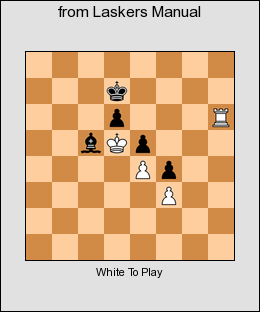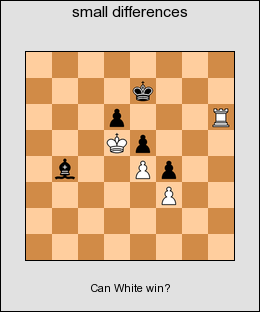Sunday, May 21, 2006
Lazy; Exchange for a Pawn; ChessUp
Hey, there. Been a while. Three brief topics today:
Lazy
I played a tournament at the Marshall two weekends back, with thoroughly mediocre results. I've just been too lazy to post about it. Bad blogger! No traffic for you! Click here to see the games, with light notes.
Exchange for a Pawn
I found a cheap copy of _Lasker's Manual of Chess_ at a used bookstore last week, and started reading it. In discussing the relative values of the pieces, Lasker says:
Here's Lasker's first example:

There's one problem: I don't think Black's King can be forced to the back rank this way if Black recognizes the danger beforehand. Let's look at a similar position:
 (Imagine, for example, that Black's last move in the Lasker diagram was ...Ke7-d7; here, instead, Black played ...Bc5-b4.)
(Imagine, for example, that Black's last move in the Lasker diagram was ...Ke7-d7; here, instead, Black played ...Bc5-b4.)
The method Lasker gives doesn't work now: 1. Rh7+ Kf6 2.Rd7 Kg5! 3.Rxd6 Bxd6 4.Kxd6 Kh4 5.Kxe5 Kg3. Now if White could only play 6.Ke4! But his own Pawn blocks that square, and the passed-Pawn race is a draw.
I've spent an hour messing around with this position, and I don't see what else he can do to win. 1.Re6+ is met by 1...Kd7! (not 1...Kf7 2.Rxd6 winning). After 1...Kd7, White would win if Black's Bishop were on c5: Then 2.Rxe5! fxe5 3.Kxc5 and the King and Pawn ending is a win. But White can't force that position. There's no Zugzwang (with 1. Rg6, say), because the Bishop can shuttle between a3 and b4. Can anyone come up with a winning idea for White?
ChessUp
The diagrams above were made with a neat new diagram creator, ChessUp. Check it out!